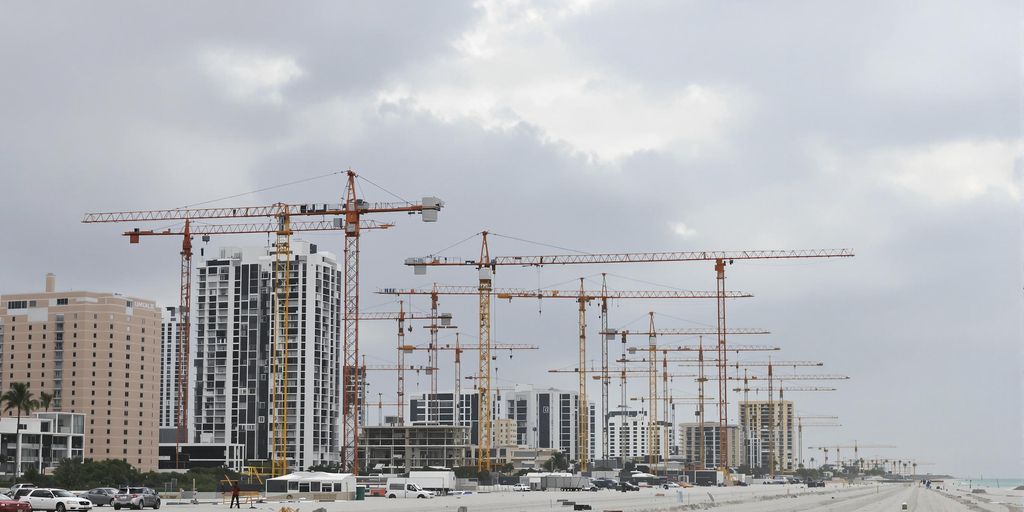South Florida’s once-booming residential real estate market is experiencing a prolonged slump, with sales volume declining significantly across major counties. This downturn, particularly affecting the condo market, is attributed to a combination of high mortgage rates, increased insurance costs, and new regulations stemming from the Surfside condo collapse. While luxury properties remain somewhat resilient, the broader market faces challenges as buyers grapple with affordability and older buildings struggle to sell.
Key Takeaways
- Sales volume in Miami-Dade, Broward, and Palm Beach counties dropped to $5.6 billion in May, down from $6.1 billion the previous year.
- Condo sales have been hit particularly hard, with Miami-Dade seeing a 25% decrease and Broward County experiencing a 24% dip.
- High mortgage rates and insurance costs are deterring average buyers.
- New safety regulations for condos, following the 2021 Surfside collapse, are making older units less attractive and harder to sell.
- Luxury properties and new builds continue to perform better than the middle market.
- Governor Ron DeSantis has signed legislation aimed at easing burdens on condo homeowner associations.
Market Correction or Meltdown?
South Florida’s real estate market is in a persistent state of rebalancing, with dismal home sales continuing for months. Data from the Miami Association of Realtors indicates a significant decline in dollar volume, with sales across Miami-Dade, Broward, and Palm Beach counties totaling $5.6 billion in May, a decrease from $6.1 billion in May of the previous year. Brokers note that the slowdown began as interest rates peaked, impacting various market segments, especially commoditized condos.
Factors Driving the Slump
The current market conditions are a stark contrast to the pandemic-fueled surge. High mortgage rates and escalating insurance costs are making it difficult for the average South Florida buyer to enter the market. Furthermore, new upkeep requirements for condos, implemented after the tragic 2021 Surfside condominium collapse, have made older buildings less appealing and more challenging to sell. This has created a polarized market, with luxury buyers able to navigate the environment more easily, while the middle market, particularly condos, faces significant headwinds.
Regional Performance Variances
Sales have seen a notable drop across the region. Miami-Dade County experienced a 20% decrease in sales compared to last May, with condo sales plummeting by 25%. Broward County, including Fort Lauderdale, saw an 18% drop in overall sales and a 24% dip in condo closings. Even the typically robust Palm Beach market experienced a 12% decline in sales year-over-year. While median prices in Miami-Dade have continued to rise for over a decade, reaching $675,000, sales volume has declined. The single-family market in Miami-Dade was a rare exception with 4% price growth, though sales still fell.
Future Outlook and Stabilization
Market insiders characterize the current downturn as a normalization rather than a crisis. The market is shifting from a seller’s market to one where buyers and sellers are on more equal footing. With increased inventory and more realistic pricing expectations, the market is stabilizing. Governor Ron DeSantis’ recent signing of legislation to ease regulations and fees for condo homeowner associations may offer some relief to the struggling condo sector. Despite the current challenges, demand remains present, but buyers are more cautious, and sellers need to adjust their pricing to align with current market realities.
Sources
- South Florida’s residential market is in a months-long slump, New York Post.


